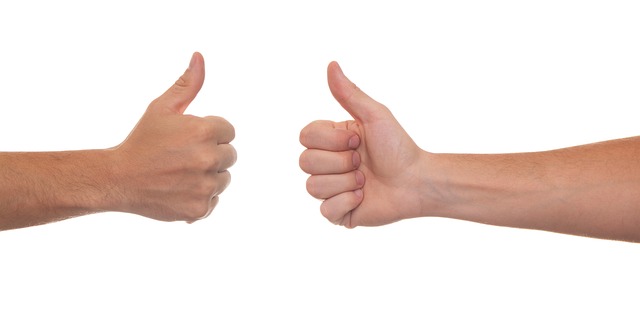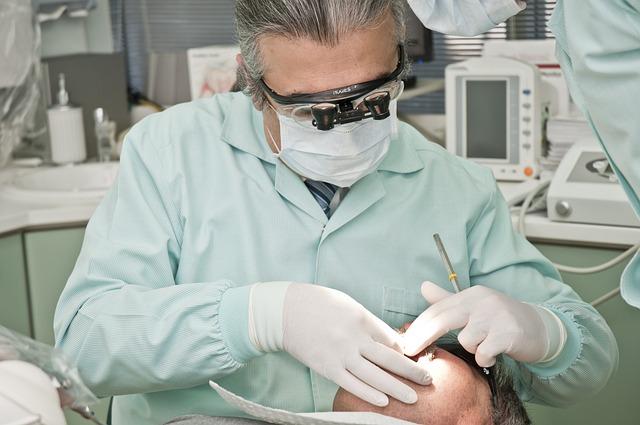Closing the Gap: Do Retainers Fix Gaps in Teeth?
Have you ever wondered if those pesky gaps in your teeth can be effectively closed? Well, wonder no more! In this article, we will delve into the world of retainers and explore their ability to fix gaps in teeth. Brimming with confidence and knowledge, we will provide you with a clear and neutral perspective on this common dental concern. So, let’s unlock the secrets behind closing the gap and discover if retainers truly hold the key to a flawless smile.
1. Understanding the Role of Retainers in Closing Gaps: A Comprehensive Overview
Retainers play a crucial role in the process of closing gaps in orthodontic treatment. They are an essential tool that helps maintain the results achieved through braces or aligners. Understanding the role of retainers is vital for patients as it allows them to appreciate the importance of wearing them consistently.
Here are some key points to consider when it comes to retainers:
- Preventing relapse: Retainers prevent teeth from shifting back to their original positions, ensuring the desired alignment is maintained.
- Types of retainers: There are various types of retainers available, including removable retainers, fixed retainers, and clear retainers. Each type has its advantages and considerations, and your orthodontist will recommend the most suitable option for your specific needs.
- Retention period: The duration for which you need to wear retainers may vary depending on your orthodontic treatment plan. Typically, it is advised to wear retainers full-time initially and then gradually transition to nighttime wear.
- Cleaning and care: Proper cleaning and maintenance of retainers are essential for their effectiveness. Regularly remove and clean your retainers using gentle products recommended by your orthodontist.
By understanding the role of retainers and following the instructions provided by your orthodontist, you can ensure that the gaps closed during your treatment remain closed, resulting in a beautiful, long-lasting smile.

2. The Science Behind Retainers: How They Can Help Fix Gaps in Teeth
Retainers are an essential component in orthodontic treatment to correct gaps in teeth. Understanding the science behind how retainers work can help you appreciate their effectiveness in closing these gaps and achieving a beautiful, aligned smile. Here’s a breakdown of the science behind retainers:
1. Preventing Shifting: Retainers play a crucial role in preventing teeth from shifting back to their original positions after braces have been removed. This is because the bone and tissue surrounding your teeth need time to stabilize and adapt to their new positions. By wearing a retainer as recommended by your orthodontist, you allow your teeth to settle into their new alignment, minimizing the risk of gaps reappearing.
2. Supporting Bone Remodeling: Retainers also promote bone remodeling, which is essential for maintaining long-term stability. When teeth are moved during orthodontic treatment, the bone around them undergoes resorption and deposition. Wearing a retainer helps the bone remodel and adapt to the new positions, ensuring that your teeth stay in place and any gaps are closed for good.
3. Debunking Common Misconceptions: Do Retainers Really Close Gaps in Teeth?
Retainers have long been a topic of discussion when it comes to closing gaps in teeth. While it is a common misconception that retainers can effectively close gaps on their own, the reality is a bit more nuanced. Here, we will debunk this misconception and shed light on the true role of retainers in orthodontic treatment.
1. Retainers as a preventive measure: Retainers are primarily used to maintain the alignment of teeth after orthodontic treatment, such as braces or aligners. They help prevent teeth from shifting back into their original positions, ensuring long-term results. However, retainers are not designed to actively close gaps in teeth on their own. They are more of a supportive tool to keep the teeth in their desired positions.
2. Additional methods to close gaps: If you are looking to close gaps in your teeth, retainers alone may not be sufficient. Orthodontic treatments like braces or aligners are typically more effective for closing gaps. Braces use brackets and wires to apply controlled pressure, gradually moving the teeth closer together. Aligners, on the other hand, are clear, removable trays that also exert gentle pressure to shift the teeth. Consulting with an orthodontist will help determine the most suitable treatment option for your specific needs.

4. The Effectiveness of Retainers in Correcting Dental Gaps: What the Research Says
Research has shown that retainers can be highly effective in correcting dental gaps. Numerous studies have demonstrated the positive impact of wearing retainers in closing gaps between teeth. Retainers work by maintaining the alignment of teeth after orthodontic treatment, such as braces or clear aligners, has been completed.
Here are some key findings from recent research on the effectiveness of retainers in correcting dental gaps:
- Prevents relapse: Retainers play a crucial role in preventing teeth from shifting back to their original positions after orthodontic treatment. Research has consistently shown that wearing retainers as directed by the orthodontist significantly reduces the risk of relapse, ensuring that the corrected dental gaps remain closed.
- Improves stability: Studies have found that retainers contribute to the long-term stability of orthodontic treatment outcomes. By wearing retainers, patients can maintain the desired alignment of their teeth, which in turn prevents the reopening of dental gaps.

5. Types of Retainers: Choosing the Right Option to Close the Gap in Your Teeth
There are several types of retainers available to help close the gap in your teeth. Each option has its own advantages and considerations, so it’s important to choose the right one based on your specific needs. Here are some common types of retainers:
- Hawley Retainers: These traditional retainers are made of acrylic and metal wires. They can be adjusted to fit your teeth and are easily removable.
- Essix Retainers: These clear plastic retainers are custom-made to fit snugly over your teeth. They are nearly invisible, making them a popular choice for those who want a discreet option.
- Bonded Retainers: These retainers are attached to the back of your teeth using dental cement. They are a permanent solution and require professional removal if necessary.
When choosing the right retainer, factors such as your lifestyle, personal preference, and the recommendations of your orthodontist should all be considered. It’s important to discuss your options with a dental professional to determine which retainer will be most effective in closing the gap in your teeth while providing the comfort and convenience you desire.

6. The Importance of Consistency: How Long Does It Take for Retainers to Fix Gaps?
Consistency is key when it comes to fixing gaps with retainers. Many people wonder how long it takes for retainers to close gaps in their teeth. While the exact timeframe can vary from person to person, maintaining a consistent routine with your retainer is crucial for achieving optimal results.
Here are some important points to keep in mind:
- Wear your retainer as instructed: Your orthodontist will provide specific guidelines on how long you should wear your retainer each day. It is essential to follow these instructions diligently to ensure the desired outcome. Typically, most patients are advised to wear their retainer for at least 20-22 hours per day initially, gradually reducing the duration over time.
- Stick to the recommended schedule: Consistency is vital in retainer usage. Maintaining a regular schedule will help your teeth adjust and close the gaps more effectively. Avoid skipping days or wearing the retainer inconsistently, as it can prolong the treatment process.
- Monitor your progress: Regular visits to your orthodontist will allow them to evaluate the progress and make any necessary adjustments to your treatment plan. They will guide you on the duration of retainer usage based on the gap size, tooth movement, and overall dental health.
Remember, the time it takes for retainers to fix gaps can vary depending on the individual’s specific case. By following the recommended guidelines and maintaining consistency in wearing your retainer, you can help ensure the best possible outcome. Consult with your orthodontist for personalized advice and guidance throughout your retainer journey.
7. Beyond Retainers: Exploring Alternative Solutions for Closing Gaps in Teeth
There are various alternatives to traditional retainers that can effectively address gaps in teeth. These alternatives offer patients more flexibility and comfort while still achieving the desired results. Here are some alternative solutions worth exploring:
- Invisalign: This clear aligner system is a popular choice for closing gaps in teeth. It consists of a series of custom-made aligners that gradually move the teeth into their desired position. Invisalign aligners are virtually invisible and can be easily removed for eating, brushing, and flossing.
- Dental bonding: This is a non-invasive and cost-effective option for closing small gaps in teeth. During the procedure, a tooth-colored resin material is applied and bonded to the teeth to fill in the gaps. Dental bonding can improve the appearance of teeth quickly and easily.
- Dental veneers: Veneers are thin porcelain shells that are custom-made and bonded to the front surface of the teeth. They can be used to close gaps, reshape teeth, and improve overall aesthetics. Veneers are a durable and long-lasting solution that can provide a natural-looking result.
Exploring these alternative solutions can help individuals find the best option for closing gaps in their teeth. It is important to consult with a dentist or orthodontist to determine the most suitable treatment plan based on individual needs and preferences.
Frequently Asked Questions
Q: Can retainers fix gaps in teeth?
A: Yes, retainers can help close gaps in teeth in certain cases.
Q: How do retainers work in closing gaps?
A: Retainers apply gentle pressure to the teeth, gradually shifting them closer together and reducing the gap.
Q: Are retainers effective for all types of gaps in teeth?
A: Retainers can be effective for small to moderate gaps in teeth. However, for larger gaps or more complex cases, other orthodontic treatments may be necessary.
Q: How long does it take for a retainer to close a gap in teeth?
A: The time required to close a gap using a retainer varies depending on the size of the gap and the individual’s teeth. It can take several months or even up to a year.
Q: Are there any risks or side effects associated with using retainers to close gaps?
A: When used properly and under the guidance of an orthodontist, retainers are generally safe. However, wearing a retainer for an extended period may cause slight discomfort or affect speech temporarily.
Q: Can retainers prevent gaps from reappearing?
A: Yes, retainers are often used as a long-term solution to prevent gaps from reappearing. They help maintain the corrected position of the teeth and prevent them from shifting back.
Q: Is it possible to use a retainer instead of braces to close gaps in teeth?
A: Retainers can be a viable alternative to braces for certain cases, particularly when the gaps are small and the teeth are otherwise well-aligned. However, it ultimately depends on the individual’s specific dental needs and the recommendation of an orthodontist.
Q: How often should retainers be worn to close gaps effectively?
A: Retainers should be worn as directed by an orthodontist, typically for a significant portion of the day, such as 20-22 hours per day, to achieve optimal results.
Q: Will wearing a retainer be uncomfortable or noticeable?
A: Initially, wearing a retainer may feel slightly uncomfortable as one gets used to it. However, over time, most people adjust to wearing a retainer, and it becomes less noticeable.
Q: Can retainers fix gaps in teeth permanently?
A: While retainers can help close gaps in teeth, maintaining the results in the long term requires consistent use of the retainer as advised by an orthodontist.
Wrapping Up
In conclusion, it is evident that retainers can effectively fix gaps in teeth. By understanding the underlying causes of dental gaps, we can appreciate the role of retainers in closing the gap and achieving a more harmonious smile. Retainers work by gently applying pressure to the teeth, gradually moving them into their desired position. They are a convenient and non-invasive solution that can be worn comfortably, whether during the day or while sleeping. It is important to note, however, that retainers should be worn consistently and as prescribed by your dentist or orthodontist to ensure optimal results. With the proper use and regular maintenance, retainers can provide a long-lasting solution to closing the gap in your teeth. So, if you have been considering addressing a dental gap, consult with your dental professional to discuss whether retainers are the right option for you. Remember, a confident and radiant smile starts with a well-aligned set of teeth.





